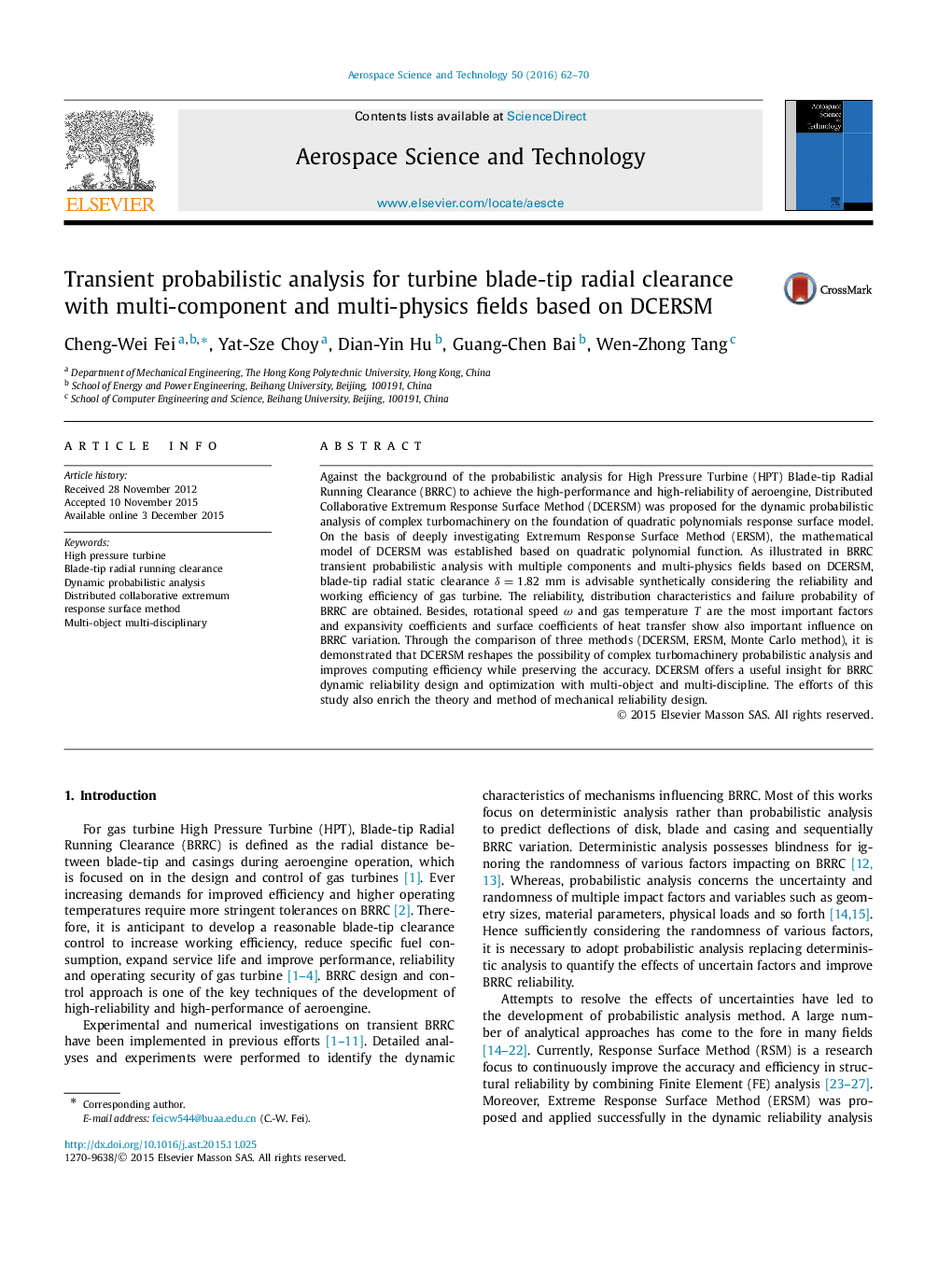| Article ID | Journal | Published Year | Pages | File Type |
|---|---|---|---|---|
| 1717611 | Aerospace Science and Technology | 2016 | 9 Pages |
Against the background of the probabilistic analysis for High Pressure Turbine (HPT) Blade-tip Radial Running Clearance (BRRC) to achieve the high-performance and high-reliability of aeroengine, Distributed Collaborative Extremum Response Surface Method (DCERSM) was proposed for the dynamic probabilistic analysis of complex turbomachinery on the foundation of quadratic polynomials response surface model. On the basis of deeply investigating Extremum Response Surface Method (ERSM), the mathematical model of DCERSM was established based on quadratic polynomial function. As illustrated in BRRC transient probabilistic analysis with multiple components and multi-physics fields based on DCERSM, blade-tip radial static clearance δ=1.82 mmδ=1.82 mm is advisable synthetically considering the reliability and working efficiency of gas turbine. The reliability, distribution characteristics and failure probability of BRRC are obtained. Besides, rotational speed ω and gas temperature T are the most important factors and expansivity coefficients and surface coefficients of heat transfer show also important influence on BRRC variation. Through the comparison of three methods (DCERSM, ERSM, Monte Carlo method), it is demonstrated that DCERSM reshapes the possibility of complex turbomachinery probabilistic analysis and improves computing efficiency while preserving the accuracy. DCERSM offers a useful insight for BRRC dynamic reliability design and optimization with multi-object and multi-discipline. The efforts of this study also enrich the theory and method of mechanical reliability design.
